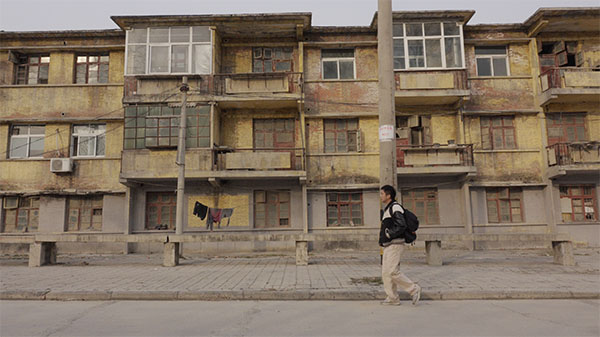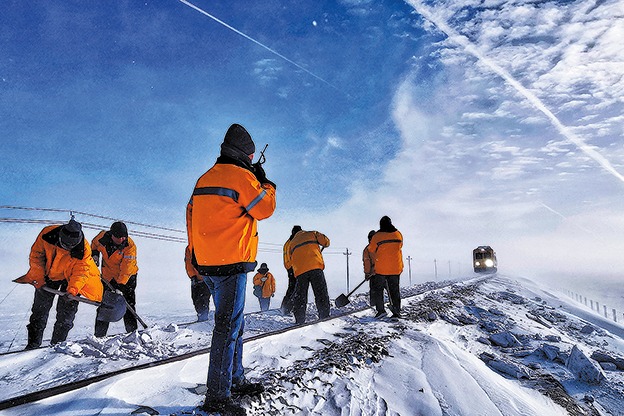Travel chronicles from China's edges


Through quiet conversations and heartfelt encounters, a young vlogger reveals the lives and cultures often forgotten by history.
In an era dominated by short videos, 28-year-old vlogger Xiaozhong (pseudonym) has garnered millions of views with his long-form travel vlogs, most of which run over 20 minutes.
He began posting videos in April last year, focusing on the real lives of people in China's most remote and overlooked regions — especially those living near administrative borders or forgotten by history.
"I want to use geography as a lens to explore the experiences, emotions, and stories of people living on the margins," he said.
To keep his work authentic, Xiaozhong relies on minimal voice-over, allowing the locals to speak for themselves. This documentary-style approach results in videos that are much longer than typical viral content, with each one taking three to four weeks to produce.
His first video, 22 minutes long, took viewers to Guangdong's northernmost village. Unlike the bustling economic hub Guangdong is known for, this isolated village is home to only a dozen residents — most of them over 80.
During his visit, Xiaozhong met an elderly woman who lived alone — her husband had passed away, and her grandchildren worked in the cities. "We talked for a long time," Xiaozhong recalled. "She seemed very lonely."
This heartfelt encounter resonated with many viewers and helped Xiaozhong realize that these overlooked remote areas hold countless untold life stories.
Xiaozhong's interest in the connection between geography and people also comes from his own background. As a member of the Hakka community, he grew up in Puning, Guangdong, where Hakka and Chaoshan cultures meet.
The Hakka, a subgroup of Han Chinese, have developed a unique language and culture shaped by their history of large-scale migrations.
"Growing up as a Hakka in a region where Chaoshan dialect is spoken, I often felt a sense of cultural displacement," Xiaozhong said. "This inspired me to explore how identity is shaped — particularly how geography plays a role in it."
One of the most meaningful moments on his journey of self-discovery came last December when he traveled to Dechen county in Yunnan province, located at the junction of Yunnan, Sichuan, and the Xizang autonomous region.
Rather than focusing on the county's status as a popular stopover on the way to the famous Meri Snow Mountain, Xiaozhong was drawn to a public notice issued in September 2024. It announced that, due to severe geological hazards, the local government planned to relocate the county seat of Shengping town 113 kilometers away in the coming years.
Curious about how such a major change would affect residents' lives, Xiaozhong set out to record Shengping — a town that might soon disappear from the map.
During his trip, he met Zhong Hua, a local man who had studied the Tibetan language and spent a decade volunteering to translate over 57,000 pages of historical documents from Tibetan into Mandarin.
Zhong explained that while tourists see Meri Snow Mountain as a natural wonder, locals refer to it as "grandfather" in Tibetan. For them, visiting the mountain is not about reaching the summit, but about connecting with a family member.
"I hope our traditional culture continues to thrive within the community — not just be preserved in museums," he told Xiaozhong.

Unseen connections
This 35-minute video has attracted over 2.8 million views on the Chinese video platform Bilibili. Many viewers commented that it was a shame they had passed through the town before but never took the time to truly appreciate it.
"The most profound beliefs and values are often rooted in the hidden corners of the map," Xiaozhong said. "I hope my videos can bring warmth to young people who have left their often-unnoticed hometowns to seek opportunities in big cities."
In addition to exploring remote regions, Xiaozhong is also passionate about uncovering forgotten chapters of history through geography.
In March, he released a 37-minute video about Pingyuan province, which existed briefly from 1949 to 1952 and has largely faded from memory — even among residents of its former capital, Xinxiang in Henan province.
Though Pingyuan province disappeared 73 years ago, Xiaozhong brought its social and historical significance back to life through in-depth research and interviews in Xinxiang, using a 1950 map to trace its past.
One of his key discoveries was the "People's Victory Canal", a water conservancy project launched by Pingyuan province in 1951.
Xiaozhong noted that the canal was vital for managing the Yellow River during the early years of the People's Republic of China. Before 1946, the Yellow River had flooded over 1,500 times, causing widespread devastation. However, since the canal's completion in 1952, it has brought lasting benefits to the region's farmland.
The video has racked up over 3.6 million views on Bilibili, with many young viewers expressing surprise at learning about a short-lived province that once played an important role in shaping modern Chinese history.
This exploration of the past also led to an unexpected connection — one of the comments came from the grandson of an elderly man Xiaozhong had met by chance during filming.
"These random encounters with strangers, both in person and online, have created a special bond for me," Xiaozhong said.
Through his ongoing travels, Xiaozhong has gradually come to better understand his own cultural identity.
"China's geography covers nearly every type of terrain and is home to 56 ethnic groups. Each area has social realities vastly different from my own," he said.
"Experiencing this diversity makes me feel like my life has crossed many boundaries, opening up endless possibilities."



































